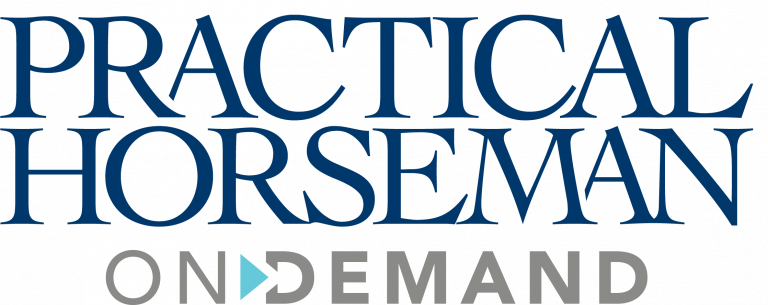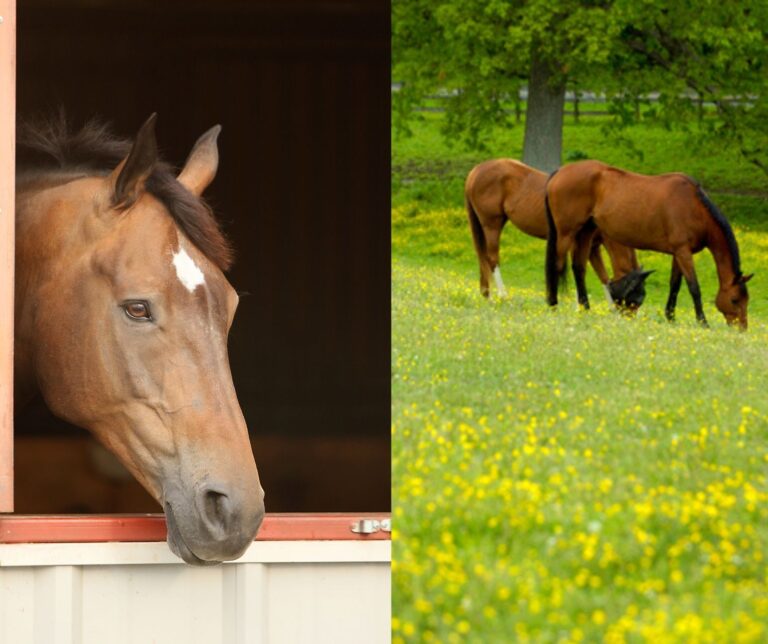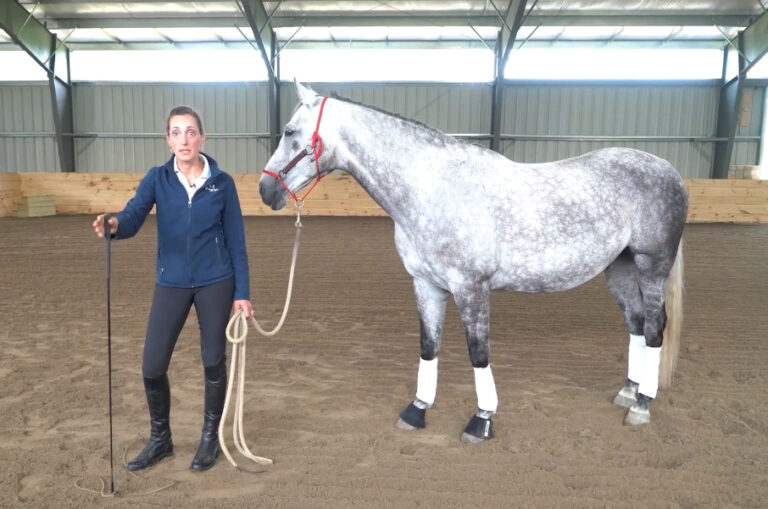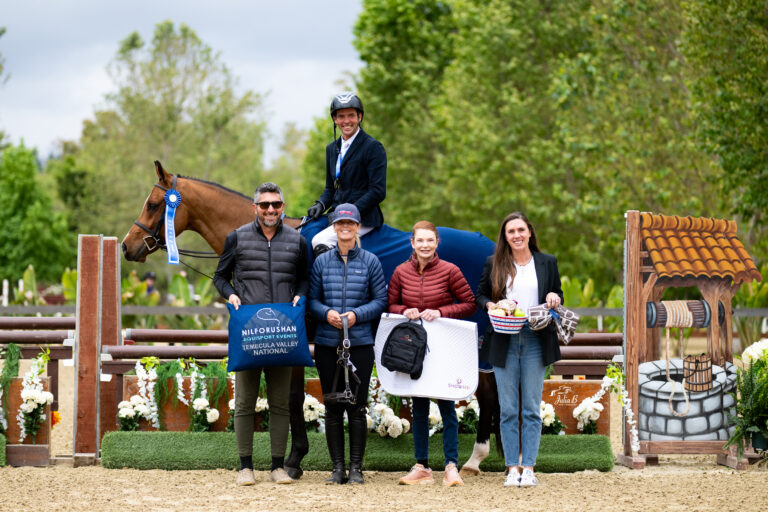While it may seem that senior horses are living longer than ever, they have been documented living to ripe old ages for hundreds of years. Old Billy was presumably a cob-Shire horse owned by the Mersey and Irwell Navigation Company in Woolston, Lancashire, England. He worked pulling barges along the canals in that area and died in 1822 at the age of 62.
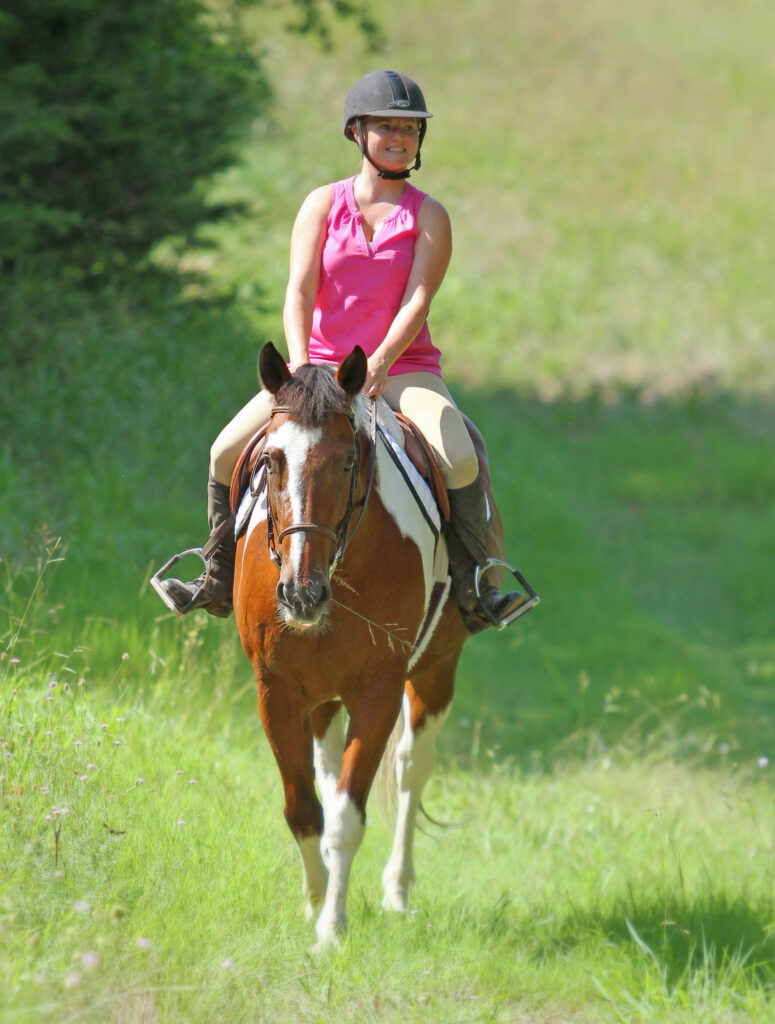
California ranch owner Bob Manns’s horse, Magic, was the oldest registered Arabian horse in the U.S. She remained healthy and sound throughout her 51 years and went on an hour-and-a-half trail ride just a month before she died peacefully in 2020.
Horses have lived and thrived well into old age for centuries, but now there are more aged equines who are healthier and more active than ever before. Conversations with your veterinarian will help identify the particular issues and challenges your older horse is facing, and routine yearly blood work screening, consistent dental care, nutritional management and attention to joint health are key to his longevity.
Horses and Owners Aging Together
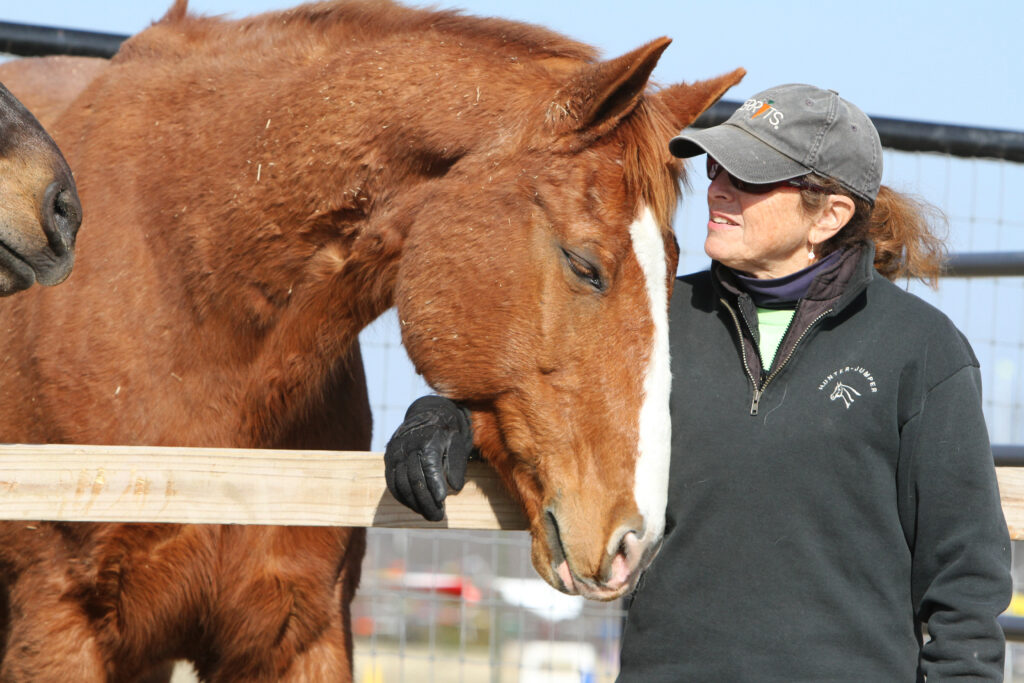
There is increasing evidence that older horses are becoming a more significant part of the equine industry. A 2001 study published in the Journal of the American Veterinary Medical Association showed that the number of geriatric horses (older than 20) went from 2.2% of total equine patients in 1989 to 12.5% in 1999, while a 2015 National Animal Health Monitoring System equine study showed that the number of aged horses continued to double from 1998 to 2015. These increases are likely due to a number of factors.
There has been a rise in specialized veterinary services for older horses, which specifically address the common problems and needs of geriatric equines. Additionally, there has been a change in perception as to what older horses can still do with proper fitness and an increase in owner willingness to seek out and finance services to keep them going longer.
This perception shift has likely been influenced by the increasing viability and longevity of the human population. And many equestrians, who are staying healthier and more active at older ages, want to help their equine companions keep pace. The United States Dressage Federation offers a Master’s Challenge Award for riders over 60, and in the ultimate acknowledgement of both aging human and horse athletic capabilities, The Dressage Foundation’s Century Club recognizes any horse-and-rider pair who completes a dressage test, at any level, with a combined age of 100 or more.
In a 2011 research article titled “Welfare of Aged Horses,” Catherine McGowan, a researcher at the Institute of Aging and Chronic Disease and professor of equine internal medicine at the University of Liverpool England writes, “In the past few decades, the role of the horse as a companion animal has become more apparent.” She goes on to discuss a survey of 47,000 horse owners across the U.S. that showed 38.4% considered their horse to be a family member and over half (56.5%) considered them a pet or companion. This explains the drastically intensified care and attention that owners have given their horses, resulting in healthier, more athletic animals throughout their golden years.
Wellness Care to Keep Older Horses Vibrant
The equine “fountain of youth” starts with better health in general. And paying close attention to seemingly simple details in older horses is crucial because small problems often have a ripple effect in seniors. Veterinarians are increasingly focused on their older patients and can more rapidly identify and treat problems and conditions affecting them than in previous decades. The basics are still very important. Vaccination programs help keep all horses protected from most common diseases, but it’s even more crucial for older (and younger) horses because they generally have weaker immune systems and can be more seriously affected by diseases. Consistent deworming with quality, targeted products has drastically reduced parasite damage in horses’ intestines, and with the reduced absorptive capabilities of some senior equines, more accurate deworming helps older horses maintain weight and reduces stress on their immune systems.

Routine blood work screening has also enabled veterinarians to identify certain conditions in senior horses and initiate more effective treatments much earlier. Older horses are sometimes anemic, and a complete blood count (CBC) will identify such a problem. Veterinarians can then look for the cause of blood cell loss or reduced red cell production, which can range from low-level liver dysfunction to age-related bone marrow dysfunction, and initiate a treatment plan. In some cases, something as simple as adding a “blood builder” tonic or other specific supplement to an older horse’s diet can improve the red blood cell and hemoglobin levels.
This improved oxygen-carrying capacity in the blood can provide senior horses with more energy, which leads to more activity and helps build and maintain muscle mass—something that is so important in older horses. More activity often leads to increased grazing, which helps address dietary concerns and weight management, and older horses with more energy tend to interact more with herdmates. Social interaction for senior horses is often overlooked but has proven important for reducing stress, boosting immunity and contributing to the quality of life for older equines.
Blood work screening can also identify problems with liver, kidney, cardiac, and many other organ systems to help veterinarians and owners determine if any dietary, exercise or treatment changes are necessary. This can often add functional years to a horse’s life.
Addressing Dental and Metabolic Issues
Equine dental care has improved greatly in recent years. Dental problems are a major concern in older horses who often suffer from tooth loss, uneven wear patterns, sharp points, worn-down teeth and other dental diseases. Equine odontoclastic tooth resorption and hypercementosis (EOTRH) is a disease seen in horses generally older than 15. While it has likely been around for many years, the increased care and attention given to older horses, especially dental care, has caused the condition to be more widely recognized in recent years. EOTRH causes tooth damage and resorption which can lead to infection, abscesses and dental fractures. Older horses with EOTRH or other dental problems can show signs of weight loss, difficulty eating and associated performance and behavioral issues stemming from constant pain and decreases in food intake.

Older horses are also much more likely to experience metabolic problems, but increased use of early blood screening tests is helping to identify these conditions and provide earlier care. Pituitary pars intermedia dysfunction (PPID, formerly known as Cushing’s disease) affects a large percentage of older horses (20% or more in some studies). Common symptoms include a long, curly coat and muscle loss, but early signs of PPID and other metabolic problems (insulin resistance or equine metabolic syndrome) can be harder to spot. Long-term weight and muscle loss; lack of energy; depression; susceptibility to skin infections, hoof abscesses, laminitis and other problems brought on by poor glucose regulation and a stressed immune system were often thought to be inherent consequences of old age. But through early detection, veterinarians can provide these horses with pharmaceutical treatments, exercise programs and dietary changes to help slow the progression of metabolic problems and remain healthier and more active.
Feeding the Older Horse

As veterinarians identify more dietary-related problems in senior horses, such as obesity, laminitis, PPID and other metabolic concerns, gastrointestinal irregularities and arthritis, the equine nutrition industry has developed new feeds with targeted ingredients and feeding strategies to help manage these conditions.
A variety of new feed types, including pellets, cubes and chopped hay products, are also now available for older horses with poor dental conditions who might have a reduced ability to digest forage, which can lead to a host of other medical issues from choke to weight and muscle loss.
Concern for aged equines has created an entirely new market for supplements designed to rebalance the bacterial environment of the older horse’s gut. These prebiotic and probiotic products promote healthy gut bacteria, which can help reduce loose stool and excessive gas, allow for better digestion and absorption and ultimately promote more stable weight and muscle mass in older horses.
New research on protein, carbohydrate and other nutrient requirements of seniors—and the feeds developed based on this research—are providing older horses with more energy, which in turn enables them to be more active and functional athletes as they age.
A report from the University of Tennessee Institute of Agriculture concludes that “nutrition for geriatrics, or old[er] horses with age-related diseases, has become more prevalent because horses are living longer and more data is available on nutrition risk factors for diseases and digestive disorders. We now have a much better under standing of how to manage the special needs horse.”
Healthy Joints for an Active Horse

Optimizing joint function and reducing symptoms associated with osteoarthritis is another major area of veterinary research and product development that has extended the athletic capabilities and lifespans of older horses. As all animals age, they develop wear and tear injuries to their joints. This long-term joint stress eventually leads to osteoarthritis that can be career-ending, crippling and sometimes even life-threatening. Anything that reduces a horse’s mobility will affect his ability to graze, which can result in weight and muscle mass loss. Additionally, pasture grass provides horses with needed essential nutrients such as Vitamins A and E, omega-3 fatty acids, and minerals like calcium, phosphorus, copper, iron, magnesium, potassium and selenium. Horses who don’t graze enough and consume decreased amounts of these nutrients are less healthy and more susceptible to disease.
Also, when horses cannot move around freely, they lose that important ability to interact with their herdmates, which can lead to isolation, depression and physiologic stress.
The majority of drugs previously available for arthritis pain control, such as phenylbutazone (Bute) and Banamine®, can cause stomach ulcers and intestinal issues as well as kidney damage with long-term use. However, new, pain-relieving medications, such as firocoxib, have been a major factor in increasing equine longevity, as they’re not as harmful to a horse’s intestines and organ systems and can be used for long periods of time. Long-term pain management enables some older horses to continue competing at lower levels while keeping others pasture-sound for much longer than previously possible.
Glycosaminoglycans, hyaluronates, chondroitin-based products and any number of osteo-protective substances have been proven to slow the progression of arthritis. This class of medications works by promoting healthy joints and cartilage while also slowing joint deterioration and extending the functional life of older joints. The common use of these products at earlier ages is creating a population of older horses with joints that are in much better condition than similarly aged horses in past decades.
The more recent development and use of regenerative medicine products such as stem cells, platelet-rich plasma (PRP), interleukin-1 receptor antagonist protein (IRAP), Pro-Stride® and numerous other intra-articular joint injections has also greatly enhanced veterinarians’ abilities to treat early joint issues and maintain better joint function as horses age. With improved joint health, continued exercise is not only possible for older horses but is essential to keeping them engaged and functional.
Overall, horses are definitely living longer and better lives. The key to helping older horses get the most out of their golden years is to consider each as an individual. Not all older horses are the same, and age, after all, is just a number. Specific decisions and treatments tailored for each older horse can be determined with the help of your veterinarian. But not seeing your horse as simply “old” is the first step. Continuing to train, exercise, compete and enjoy your senior equine partner, as much as is possible, is the ultimate way to grow older and better together.
Age: What’s in a Number?
Traditionally, the veterinary community has considered horses 20 and over as “aged” or “senior” when considering their nutrition, joint care, reproductive considerations and management. But this classification system is largely arbitrary, with the 20-year mark decided upon with little research. Recent work by the National Research Council and others suggests that there may be better ways to define “old age,” which can help veterinarians provide more specifically targeted ways to care for aging horses. Researchers have suggested that equine age be defined by a combination of three factors: physiologic age, chronologic age and demographic age.
Physiologic age refers to the internal factors of the animal—natural decreases in reproductive performance; decreases in tendon, ligament and joint function; decreased muscle mass and reduced capabilities in digestive, liver, kidney, cardiac and other organ systems. The generally accepted age for an “older” horse, from a physiological age perspective, is from 15 to 20. A reining horse who has been extensively competed as a young horse and experienced a reduction in his musculoskeletal system health may be considered “old” at 10, while a lightly used trail horse may be functionally sound and healthy and not “physiologically old” at 25.
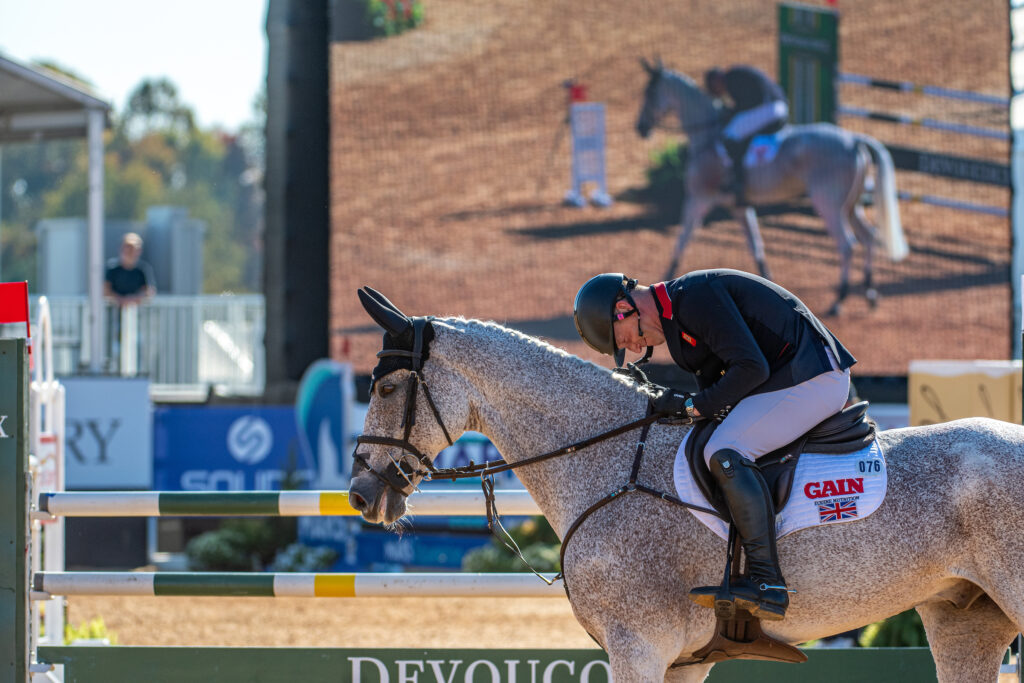
Chronologic age refers to the number of years from birth compared to expected longevity. There are horses that live to be 40—and some well beyond that—and the number of these “seniors” is growing. Using this criterion, horses are classified as “old” when they’re between 20 and 30 and “very old” if over 30. As more horses continue to live longer, you can expect these chronologic age classes to be periodically revised.
Demographic age is determined by survival relative to a specific subset of a population defined by a region, discipline or other factors, including economics, use or social issues. The age at which an individual becomes “demographically old” is the age at which they are older than 75% of the other members of that specific group. Horses living in harsh climates generally may not live as long as horses in milder weather locations. Some areas view horses differently from a societal perspective, which often determines the level of care that they are given, and some horse-owning populations have differing economic concerns, which can affect horse care, health and, ultimately, longevity.
A 15-year-old horse living in generally harsh conditions in northern Sweden may be seen as a “senior” relative to the majority of other horses living there. Racehorses are generally put under more stress at an early age and have higher incidences of injuries associated with their use, so as a demographic group, they may not live as long as horses in other disciplines, such as dressage or endurance. Therefore, classifying an off-the-track Thoroughbred as “old” at 18 may be more correct than applying that same label to an 18-year-old dressage horse. Demographic age considers all these different factors and can help make discussions about equine aging much more productive.
The bottom line is that age, for all of us, is so much more than just a number. Using a combination of all these age criteria for each individual may be a better way at arriving at a horse’s more accurate and functional “age,” which can then determine management and maintenance programs for these equine seniors.
About Kenneth L. Marcella, DVM

Kenneth L. Marcella, DVM, is a graduate of the New York State College of Veterinary Medicine at Cornell University. For more than 30 years, he has treated sporthorses of all disciplines and levels, including international competitors. Dr. Marcella has served as a veterinary official at many events around the world, including national championships, world championships and Olympic competitions. He is board-certified in thermal imaging and is currently a member of the board of directors of the American Academy of Thermology. With an undergraduate degree in English from Dartmouth College, Dr. Marcella has also written articles for numerous publications.




